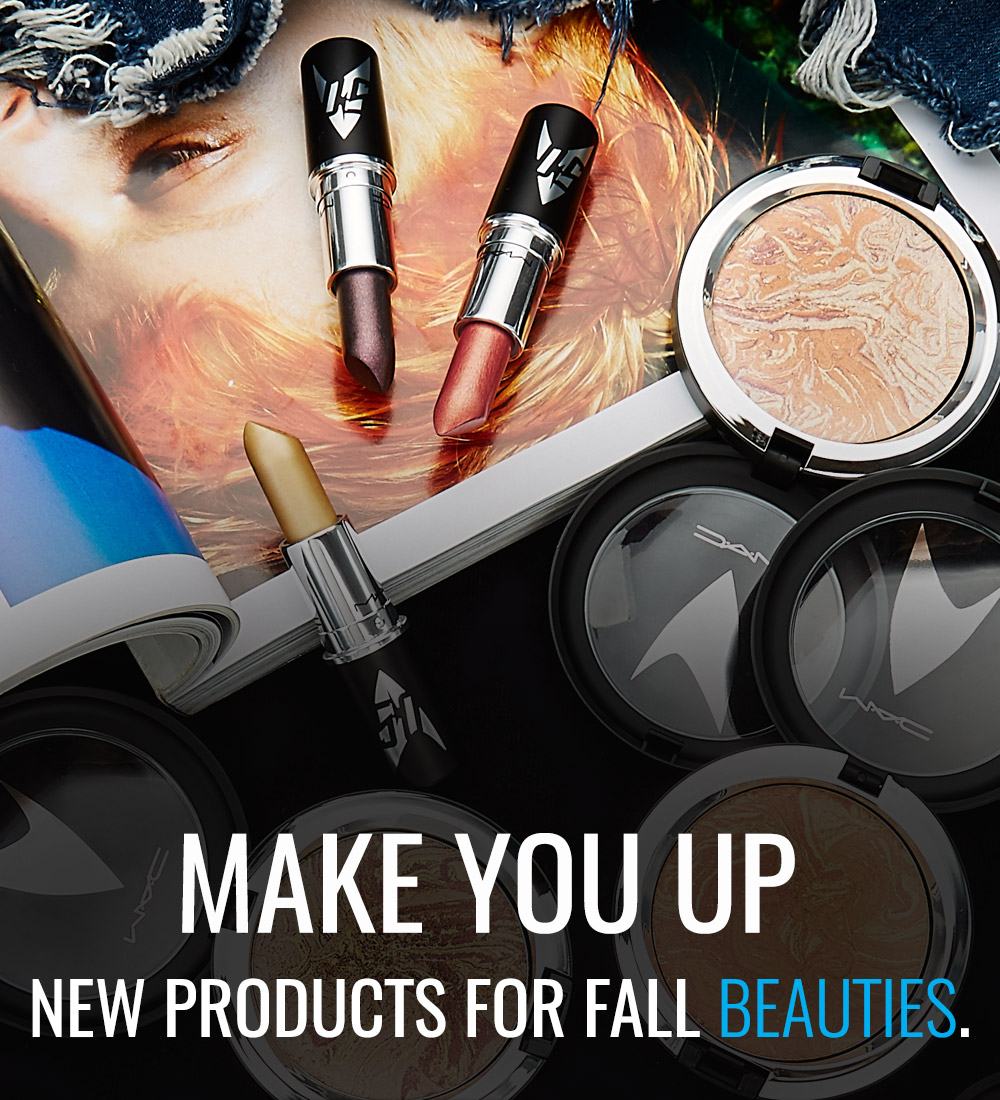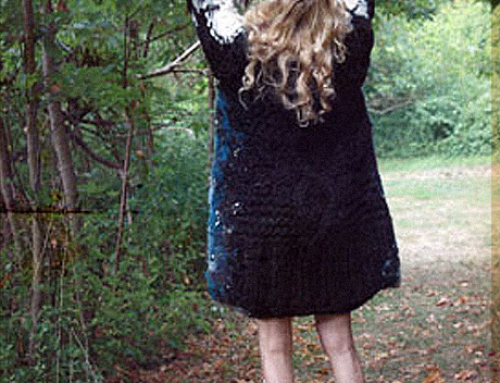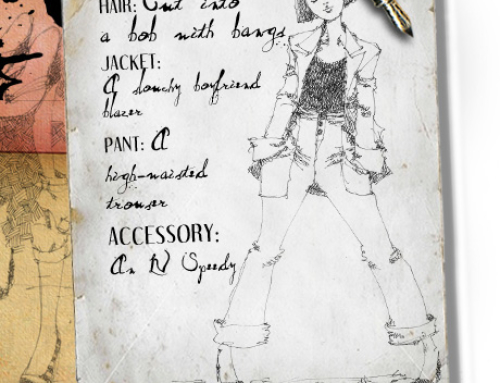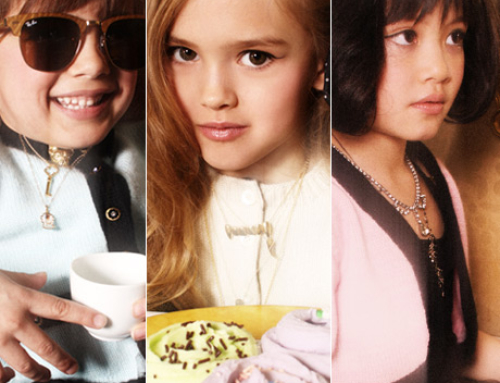How did KZO begin?
It honestly started just as an idea that I had after shooting a bunch of videos and writing a lot of treatments. It was really organic, and I started putting together a book of what the ideas and brand would look like, sound like, feel like, etc. I also watched films that inspired me, and edited together a video treatment with films from Kurosawa’s Dreams [to] 24 Hour Party People that were looks and feelings I was after with KZO. Looking back now, the brand has really evolved after seven seasons, but the creative spirit has stayed the same. I look back at my first season and cringe, but it was a great starting point to build on.

“We shot the KZO Spring/Summer 2010 photo shoot at an old venue in Silverlake on Sunset Blvd called El Cid. My sister used to dance cabaret there AND we got the location for next to nothing. I wanted the feeling to be light and warm so the different colored lights seemed only fitting. We painted gesso onto a black pair of Converse high tops and had a KZO stamp made in Japan with the seasonal story Into the Blue stamped onto the side of the shoes. Into the Blue was the name of a fictional tour I made up loosely based on Neil Youngs 1978 Rust Never Sleeps tour.”
Why did you choose Tokyo as your production base?
To me, making clothes in Tokyo is being able to make the best possible garments possible. The Japanese (I’m also half-Japanese) are so detail oriented, and it’s great being able to produce garments in Japan with such precision, which is next to impossible to get in the United States.

Has it been difficult flying back and forth?
The second I think to myself that flying to Japan every month during design season is “difficult,” I think back 100 years how impossible it would have been to do this … I feel extremely fortunate to be able to experience Japan so frequently.
Which city do you feel most at home in, and which are you most inspired in as a designer?
More and more, I’m feeling like both cities are becoming a home base for me. Each city brings something unique and inspiring as a designer. In Japan, fashion trends move so much more quickly than in the States, so I constantly have to scale back the designs of the collection for the American market. This is also really inspiring from an art standpoint, because in all different types of creative mediums the Japanese are pushing the boundaries, and it’s nice to see where that “edge” is.
Your Spring/Summer 2010 collection is inspired by Neil Young. Was there a specific track or album that inspired you, or more just the artist himself that inspired your designs?
Neil Young’s music to me is so timeless. I listen to it now and it’s hard to think that the song I’m hearing was made in the early 70s, it seems like it could have been made today. For the Spring/Summer 2010 collection, I was listening to a lot of his late 70s “grungy” period work. He has an album called Rust Never Sleeps, and he plays his 1953 Gibson Les Paul Goldtop, called “Old Black,” which sounds really gritty and dirty. It’s great. Neil also lived in Los Angeles after moving down from Canada, and I see his casual, California fashion sense as being iconic, with his screen-printed “Big Yank” open flannel over a t-shirt and ripped up jeans; the “godfather of grunge.”
How would you describe the aesthetic of this collection?
The Spring collection is a lot of fabrics with great textures, colours, and comfort, all made in Japan. The season was called “Into the Blue, Out of the Black,” a play on words from a Neil Young song. The “blue” to me symbolized chambray shirts, lightweight denim shirts with washes, grungy cut-up denim pants. The season also included check pattern shirts, comfortable fleece cardigans, and Navajo-print French Terry blazers with matching sweat shorts.

Your line has really expanded since you first founded it. Is there any new design territory KZO will be exploring in the near future?
I think that we’ve only just scratched the surface as far as “fashion territory” is concerned. Moving into different categories seems so far away … I’m mainly focusing on putting together a small, tight collection that tells a concise story every season, and then introducing a small number of pieces that fit into the seasonal story. Fall 09, “Hallowed Ground” (based on California explorer and conservationist John Muir), we did a collaboration with Master-Piece, Japan. It was a hiking backpack with metal hardware, waterproof zippers, and a rain cover that zipped out. The bag got a lot of great press, and looked smart and sophisticated.
You’ve also collaborated with other designers, including Brett Westfall of Unholy Matrimony, in the past. Are you planning any up-and-coming collaborations with him or other designers?
Brett Westfall/Unholy Matrimony is really talented, and I feel fortunate to work with him on collaborations. For Fall 2010, we are collaborating with Master-Piece again on a new backpack, as well as an Unholy Matrimony/KZO colouration denim jacket. I like the ideas of collaborating because in a good environment, 1+1 doesn’t equal 2, it can also = 3, 4, 5, and so on.

Like you, Unholy Matrimony is based in L.A. Would you say that it’s a close-knit group of designers working in the city?
Los Angeles is a close-knit fashion environment, as is Tokyo or New York, but with less people. Scott Sternberg of Band of Outsiders has done a really great job of being based in Los Angeles and juggling the fashion world abroad. Brett Westfall as well, with his multiple COMME des GARCON collaborations. It’s a visceral fine line.
Besides the ones you’re partnering with, what designers are you currently watching?
I admire artists that work extremely hard and execute their vision to the best of their ability. I admire Jun Takahashi at Undercover for his ability to design a men’s and women’s collection season after season, curate photo exhibitions, publish books, take pictures, write, etc. He’s very creative and versatile. I also love Stanley Kubrick’s talent to make films in different genres yet capture his own personal style in every frame. In any Kubrick movie, you can watch a scene and know right away it’s his. In fashion, we are creating new seasonal collections two, three, and four times a year, with new themes and reinventing the story, while keeping the DNA of the brand consistent. It’s a lot like a film or an album.
When you’re not working, what do you like to do?
“Not working,” when is that? Isn’t the creative industry a 24/7 job? Well, it pretty much is, but when I’m not “working,” I’m catching up on sleep.










